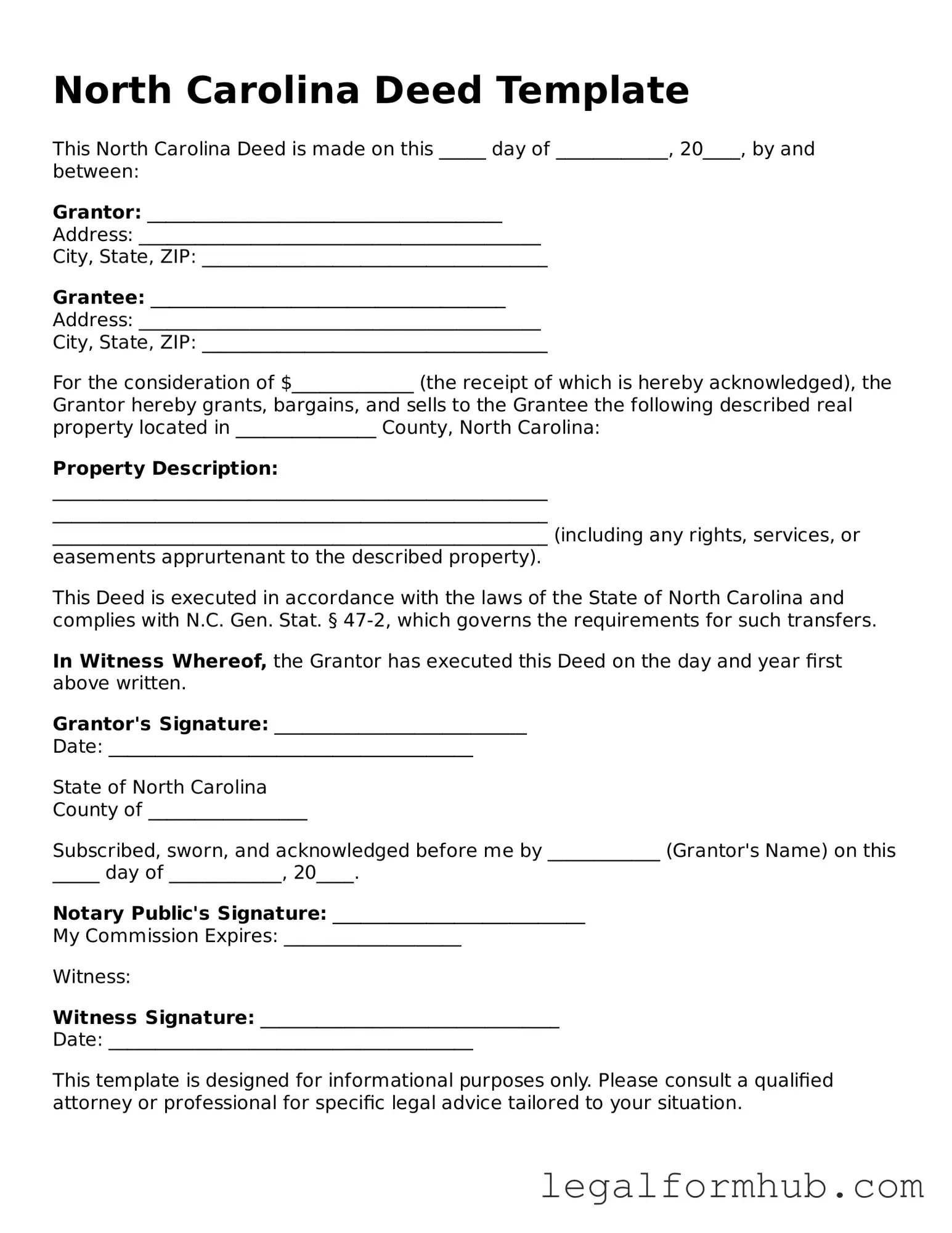Instructions on Writing North Carolina Deed
After obtaining the North Carolina Deed form, it is essential to complete it accurately to ensure proper transfer of property ownership. Following the steps outlined below will help in filling out the form correctly.
- Begin by entering the date at the top of the form where indicated.
- Fill in the names of the grantor(s) (the current owner(s) of the property) in the designated section.
- Provide the names of the grantee(s) (the new owner(s) of the property) in the appropriate area.
- Specify the property description. This may include the address, parcel number, and any relevant legal descriptions.
- Include the consideration amount, which is the price paid for the property, in the specified section.
- Sign the form in the area designated for the grantor's signature. If there are multiple grantors, each must sign.
- Have the signature(s) notarized. A notary public must witness the signing and provide their seal.
- Complete any additional sections that may apply, such as the acknowledgment by the notary.
- Review the entire form for accuracy before submission.
Once the form is completed and notarized, it should be filed with the appropriate county register of deeds office. This step is crucial for the deed to be officially recorded and recognized. Ensure to keep a copy for personal records.
